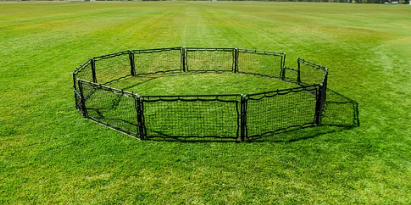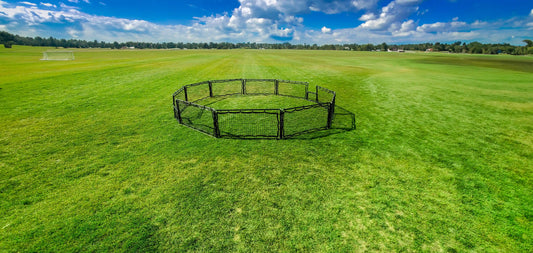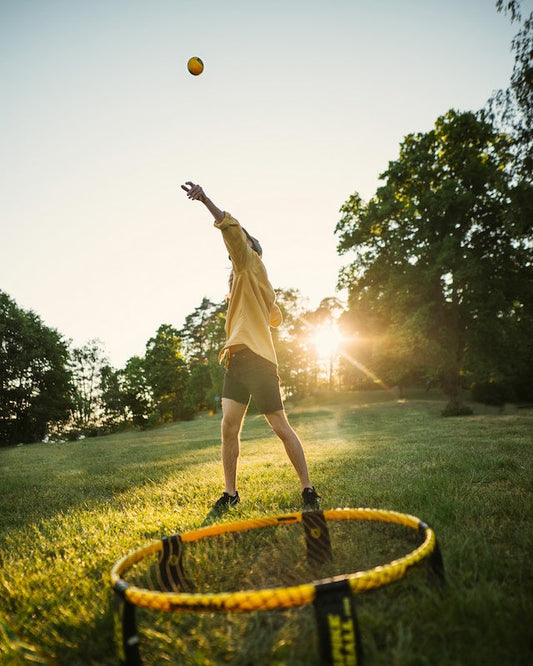"Polish Ringo" represents a delightful fusion of traditional Polish sporting culture with the dynamic gameplay of Ringo. While Ringo itself is an exciting adaptation of volleyball originating from Israel in the 1950s, Polish Ringo adds a distinctive Polish flair to the mix, offering players a unique and exhilarating experience.
At its core, Polish Ringo shares many similarities with its Israeli predecessor. However, it introduces a circular ring—typically made of rubber or plastic—as the primary object of play instead of the traditional ball. This circular ring adds a new dimension to the game, requiring players to adjust their techniques and strategies to adapt to its unique flight characteristics.
To delve deeper into the essence of Polish Ringo, let's explore its gameplay and rules in more detail:
- Team Composition: Polish Ringo is typically played in teams of two to four players per side, although variations with larger teams are not uncommon. The game encourages teamwork, communication, and coordination among teammates as they work together to outmaneuver their opponents.
- Court Setup: Like traditional Ringo, Polish Ringo is played on a court divided into two halves by a net. The dimensions of the court may vary depending on the level of play and available space, but it is usually smaller than a standard volleyball court. The court surface can range from sand to grass to indoor flooring, offering versatility in playing environments.
- Object of the Game: The primary objective of Polish Ringo remains consistent with Ringo: teams aim to score points by hitting the ring over the net and into the opponent's half of the court, while preventing it from touching the ground on their side. Players must use their hands, arms, legs, or any part of their body to hit the ring, but they are not allowed to catch or hold it.
- Scoring: Points are scored when the ring touches the ground within the boundaries of the opponent's court. The scoring system may vary depending on the agreed-upon rules, with matches typically played to a predetermined number of points or sets.
- Techniques and Strategies: Polish Ringo requires players to develop a diverse range of techniques and strategies to excel in the game. From powerful serves to precise volleys, players must master various skills to outmaneuver their opponents and control the flow of play. Quick reflexes, agility, and spatial awareness are crucial for success in Polish Ringo, as players must anticipate the ring's trajectory and react swiftly to keep it in play.
- Equipment: The primary piece of equipment in Polish Ringo is, of course, the circular ring. This ring is typically lightweight and durable, allowing for easy handling and maneuverability during gameplay. Additionally, players may choose to wear appropriate athletic attire and footwear to enhance their performance and minimize the risk of injury.
- Community and Culture: Beyond its gameplay mechanics, Polish Ringo fosters a sense of community and camaraderie among players. Whether played casually at parks or beaches or competitively in organized leagues and tournaments, Polish Ringo brings people together, transcending age, gender, and skill level. It serves as a platform for social interaction, friendly competition, and shared enjoyment, embodying the spirit of sportsmanship and inclusivity.
Here at Castle Sports we love to combine new and old games together, so below let's discuss how we would play 9 Square Ringo.
Combining the dynamic gameplay of 9 Square with the unique elements of Polish Ringo creates an exciting fusion that promises endless fun and challenges for players of all ages. Imagine stepping onto the court, where the energy of 9 Square's fast-paced action meets the strategic gameplay of Polish Ringo, resulting in a thrilling hybrid game that tests agility, teamwork, and precision.
To merge these two beloved games into one cohesive experience, we'll need to blend the core mechanics and elements of both while introducing innovative twists that capitalize on their respective strengths.
- The Court: The first step in creating this hybrid game is to set up a court that accommodates elements from both 9 Square and Polish Ringo. We'll utilize the traditional 9 Square court layout, which consists of a square divided into nine smaller squares, each designated for a player. However, instead of a standard volleyball net, we'll suspend a Polish Ringo ring horizontally across the center of the court, positioned at a height that encourages dynamic play while ensuring fair competition for players of all skill levels.
- The Equipment: Players will use a Polish Ringo ring as the primary game element, serving as both the ball and the scoring object. The ring's unique design allows for versatile gameplay, enabling players to hit, spike, and block with precision and control. Additionally, each player will have the option to use their hands, arms, or any part of their body to interact with the ring, adding an extra layer of excitement and creativity to the game.
- The Gameplay: The objective of the game is to hit the Polish Ringo ring over the net and into one of the opponent's squares, while preventing it from touching the ground within your own square. Players must employ a combination of speed, accuracy, and strategy to outmaneuver their opponents and score points.
Here's how the gameplay unfolds:
- Serve: The game begins with a serve, where one player initiates the action by hitting the ring over the net and into an opponent's square. The ring must pass over the net and land within the boundaries of the receiving player's square to be considered a legal serve.
- Rally: Once the ring is in play, players must use their skills to keep it airborne and aim for an opponent's square. Each player has the opportunity to hit the ring once before it must be returned over the net. Players can use a combination of volleys, spikes, and blocks to keep the ring in play and outmaneuver their opponents.
- Scoring: Points are scored when the ring lands within an opponent's square or when an opponent commits a fault, such as letting the ring touch the ground within their own square or hitting the ring out of bounds. The player or team that scores a point earns the right to serve for the next rally.
- Rotation: As in 9 Square, players rotate positions clockwise after each point scored, allowing everyone to experience different positions and challenges throughout the game.
- The Fusion: By combining the fast-paced gameplay of 9 Square with the strategic elements of Polish Ringo, this hybrid game offers a unique and engaging experience that encourages teamwork, communication, and friendly competition. Players must not only possess sharp reflexes and agility but also demonstrate tactical awareness and anticipation to outsmart their opponents and emerge victorious.
Moreover, the fusion of 9 Square and Polish Ringo opens the door to endless variations and adaptations, allowing players to customize the rules, court layout, and equipment to suit their preferences and skill levels. Whether played casually at a backyard gathering or competitively in a tournament setting, this innovative hybrid game promises to captivate players and spectators alike with its blend of action, strategy, and excitement. So gather your friends, step onto the court, and experience the thrill of 9 Square mixed with the exhilaration of Polish Ringo—a game like no other.
In conclusion, Polish Ringo represents a captivating synthesis of tradition, innovation, and camaraderie. With its unique gameplay mechanics, strategic depth, and vibrant community, Polish Ringo offers an engaging and accessible sporting experience for players of all ages and backgrounds. Whether played recreationally for fun or competitively for glory, Polish Ringo continues to captivate the hearts and minds of players around the world, exemplifying the enduring appeal of sports as a source of joy, unity, and connection.







